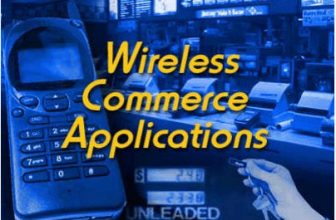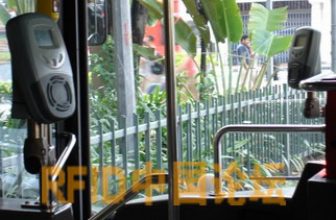
Hangzhou Internet of Things: Successful Application of Citizen Card in Public Service
[ad_1]
When the second-generation ID card completes the gorgeous change-up, when the electronic label realizes the “things” dialogue, when the “all-in-one card” interprets intelligent transportation, the era of the Internet of Things comes quietly. The Internet of Things technology has become the third wave of the development of the world’s information industry after computers and the Internet. It has good application prospects in urban transportation, government work, public safety, safe home, smart fire protection, elderly care, personal health and other fields . Applying the Internet of Things technology to the fields of public services and government construction can not only greatly improve the work efficiency and scientific management of relevant government departments, but also bring benefits and convenience to the citizens.
1. Internet of Things and Public Services
(1) The concept of the Internet of Things
The Internet of Things (Internet of Things) is the use of radio frequency identification (RFID), infrared sensors, global positioning systems, laser scanners and other information sensing equipment to connect any item to the Internet in accordance with an agreed protocol for information exchange and communication. , In order to realize a network of intelligent identification, positioning, tracking, management and supervision. It is a network that realizes the comprehensive interconnection of people and people, people and things, and things and things for the purpose of perception. Its outstanding feature is to obtain various information of the physical world through sensors and other methods, and combine the Internet, mobile communication network and other networks to carry out information It uses intelligent computing technology to analyze and process information, so as to enhance the perception of the material world and realize intelligent decision-making and control.
The core technologies of the Internet of Things are: individual identification technology represented by electronic tags, individual behavior recognition and effective communication technology represented by sensor networks, and intelligent information processing and feedback execution technology with intelligent control as the core. Specifically, the Internet of Things is to embed and equip sensors in various objects such as power grids, railways, bridges, tunnels, highways, buildings, water supply systems, goods, and even vegetables we usually eat, and then connect these sensors to form Sensor network, and then integrate this network with the existing Internet to realize the integration of the virtual world of information formed by the Internet and the physical world in reality. Adopt appropriate information security guarantee mechanism to provide safe, controllable and even personalized timely online monitoring, positioning and tracing, alarm linkage, dispatch command, plan management, remote control, decision support and other management and service functions, which are highly efficient and energy-saving for “everything” , Realize the integration of management, control and application in a safe and environmentally friendly way.
(2) Definition of public service
Public service is the core concept of public administration and government reform in the 21st century, including strengthening the construction of urban and rural public facilities, developing education, science and technology, culture, health, sports and other public undertakings, and providing protection for the public to participate in social economic, political, and cultural activities. . Public services are based on cooperation, emphasizing the service nature of the government and the rights of citizens.
Providing public services according to public needs is the basic duty of modern governments. With the development of economy and society, the public’s demand for public services continues to increase, and the requirements for the government are also getting higher and higher. Through modern information technology, innovating public service models, improving government service efficiency, and realizing the transformation from a management-oriented government to a service-oriented government have become an important means to meet the public’s demand for public services. At the same time, it is also an important starting point for the construction of e-government affairs in government departments. .
(3) The application value of Internet of Things technology in the field of public services
The service target of public services is the general public. With the development of society, citizens have put forward higher requirements for convenient, personalized and humane enjoyment of public facilities and public services such as education, science and technology, culture, health, and sports. In order to meet these needs, relevant government departments need to have timely control over the macro conditions of public facilities and public services and the personal behavior characteristics of citizens, so as to make timely dispatch and management, which not only improves the macro service environment, but also meets the diverse needs of citizens. Therefore, relevant government departments should not only track and supervise the dynamic public service situation in a timely manner, so as to prepare for dispatch and accident handling in a timely manner according to the development of the timely situation; but also have a wealth of data on the characteristics of citizens’ behaviors, and carry out investigations on the characteristics of citizens’ behaviors. Statistics, sorting, classification, and accurate prediction of the demand trend of citizens for public services in order to make rapid and scientific decisions.
At the same time, the government not only needs to provide citizens with high-quality public services, but also needs to allow citizens to perceive the high-quality life that public services bring to them in a timely manner. Equip each citizen with an electronic tag, and use the electronic tag to authenticate the citizen’s identity, which can make it convenient to use public facilities, enjoy public transportation, education, culture, health, social security and other public service preferences, and perceive the impact of social development. Quality of life; at the same time, through the function of electronic tag information recording, the activity information of citizens participating in public services is transmitted to the back-end system as citizen behavior data, providing high-quality basic data support for government departments to make scientific decisions and accurate predictions.
The Internet of Things relies on a powerful sensor network and its sensing equipment to realize information exchange and communication in a timely manner, and to intelligently identify, locate, track, manage and supervise objects. Vigorously promote the application of Internet of Things technology in the field of urban management and public services, and establish an Internet of Things perception system, which is important for establishing a service-oriented government, improving the management capabilities and intelligence level of public services, and then driving the development of the entire city’s Internet of Things industry significance.
It can be seen that electronic tags, sensor networks and back-end intelligent information systems play a key role in the application of Internet of Things technology in public services. Only by organically combining back-end personal static data with front-end dynamic behavior information can it truly be achieved. “During strategizing, decisive victory thousands of miles away.” As an information carrier for the government to provide various public service services to the people, the Hangzhou Citizen Card is an electronic tag for the government to perceive citizens’ behavior. With its powerful back-end system and service network, it promotes the application of Internet of Things technology in the field of public services.
2. Perceive Hangzhou and Perceive Life with Citizen Card
(1) Construction of citizen card
Under the correct leadership of the Municipal Party Committee and the Municipal Government, the Hangzhou Citizen Card Project has made great progress in personal electronic label issuance, sensor network deployment, and background basic database construction after nearly 7 years of development:
1. As an information carrier for the government to provide various public services and convenience services to citizens, the Hangzhou Citizen Card is a multifunctional smart IC card that integrates personal identification, information recording, encryption/decryption, and consumption payment. Approximately 2.3 million cards have been issued, basically realizing full coverage of residents over 16 years old in the main urban area of Hangzhou.
2. To cooperate with the application expansion of citizen card in the fields of social security, public transportation, public service, payment application, etc., there are currently tens of thousands of citizen card swiping devices and self-service terminal devices all over residential communities, major office buildings, government departments, etc. Many merchants have formed a relatively complete induction network.
3. Through the Hangzhou Citizen Card Project, a comprehensive information exchange platform for e-government in Hangzhou, which is connected to most functional organizations in the city, has been established. Through information exchange and collection, a basic personal information database in Hangzhou has been formed, laying a foundation for the application of Internet of Things technology to public services. Solid foundation.
At present, the application functions of citizen card in the field of public service are becoming more and more abundant, and the application penetrates into all aspects of citizen’s life. The specific performance is as follows:
1. “All-in-one card” for social security services. The “all-in-one card” of social security services represented by medical insurance applications can be applied to personal affairs in the field of “big social security”, such as pensions, work-related injuries, unemployment, civil affairs subsistence allowances, social assistance, health records, etc., and can also be used as government Various departments provide the public service carrier for citizens, such as housing provident fund inquiry processing, economically affordable housing (low-rent housing) processing review, etc. The citizen card allows citizens to easily perceive high-quality social security services.
2. “One Card” for public transportation. Swiping the citizen card to take public transportation can enjoy a monthly public transport ticket discount and a 10% discount on the wallet; it can be used for taxis, water buses, public bicycle rentals, road parking discounts, and subways in the future. The citizen card allows citizens to perceive preferential policies in the field of public transportation.
3. “All-in-one card” for public services. The citizen card can be used as a park card, library card, etc. for various public service occasions. It can also be used as a payment tool to pay traffic police fines and recharge mobile phone bills. In the future, a citizen card account will be opened to pay urban management fines and water, electricity, and gas. The functions of various public utility expenses such as expenses, communication expenses, etc. The citizen card allows citizens to perceive the high quality of life brought about by high-quality public services.
(2) The citizen card promotes “dual perception”
The citizen card, as an information carrier and electronic tag for identifying individual citizens, provides a solid physical foundation for IoT technology to better serve the public service field through an increasingly sophisticated sensor network and a powerful back-end information service system. A platform for the government to implement management and an effective tool for convenient services” builds a bridge for citizens to perceive government services and the government to perceive citizens’ needs–promoting the “dual perception” between citizens and the government.
Take the library application of citizen card as an example. Citizens borrow books through citizen cards. The library collects readers’ basic information and book information. Through the correlation analysis of readers’ age, gender, educational background, occupation and other personal information and their borrowed book information, the library summarizes the reading characteristics and reading characteristics of different citizen groups. Preferences, reading habits, and cultural characteristics of the overall population. The library can adjust the structure of the collections and the settings of the library. The cultural management department can also use this data as a basis to scientifically guide the cultural reading life of citizens and follow social development. Need more directional adjustment guidelines. At the same time, cultural management departments such as libraries can provide citizens with new book information, lecture information, cultural performance information, public cultural activities and other information in a targeted manner according to the cultural needs of different citizen groups, so that citizens can understand the latest and personalized culture in a timely manner. Serve information, improve citizens’ reading quality, enrich citizens’ cultural life, and allow citizens to perceive the quality of public cultural services provided by the cultural management department.
The citizen card is used in the construction of the health record project. The citizen card is used as the information carrier of the health record/electronic medical record, and records each citizen’s medical diagnosis, clinical diagnosis and treatment, physical examination and other information in detail to form a health record. Combined with the personal identification of the citizen card, a unified and standardized health file and a detailed database of diagnosis and treatment will be built in the city to realize the sharing of diagnosis and treatment result information among various hospitals, which can effectively divert patients from large hospitals and effectively realize the reasonable and efficient use of medical resources; at the same time, it can prevent citizens from taking care of them. The trouble caused by repeated inspections of the same project in different hospitals or carrying historical laboratory reports provides a more convenient and true basis for the traceability of the cause of the disease, and allows citizens to perceive the convenience brought about by social progress; the health authority can also use the health file data information database, Perceiving the overall health of citizens will help strengthen the defense and control of infectious diseases.
In the field of medical services, the application of citizen cards in hospitals further embodies the characteristics of dual perception. Using citizen card identity information, medical insurance information, and account functions, medical expenses can be settled directly at each drug collection window, diagnosis and treatment point or doctor’s workstation, optimizing the diagnosis and treatment process, and solving the problem of long queues in the hospital; using the citizen card personal information in the inpatient area, It is used to clarify the identity of the patient before medication and surgery, and to correspond to the patient’s medical advice, medication, and surgery, so as to reduce the frequent medical accidents of wrong medication and wrong surgery; use the detailed personal basic information database of the citizen card, which can be used for Medical institutions build a shared universal customer relationship management platform, provide citizens with treatment tips, appointment registration, expert reminders, provide medical examination appointments, telemedicine services for the elderly and patients with chronic diseases, and provide remote return visits, disease monitoring and other personalities for patients with infectious diseases. Provided services that allow citizens to perceive the higher-quality humanistic care of medical institutions.
Using the citizen card as a certificate for participating in cultural and sports activities is conducive to overall control of the utilization rate of cultural stadiums, citizen acceptance and other information, and provides a scientific basis for the government to subsidize cultural and sports institutions; use the citizen card account to control the relevant information Special subsidies for the population can allow these citizens to directly enjoy the government’s preferential policies, and increase the citizen’s participation in cultural and sports activities; the geographical distribution, age, education level, and enthusiasm of participating in cultural and sports activities in the basic database of citizens The analysis of information provides scientific data for the planning and construction of cultural and sports facilities, setting up activities, etc.
The wide application of citizen cards in urban transportation, public utilities, public services, etc., builds a bridge for citizens to perceive public services and the government to perceive their needs, so that citizens can feel the government’s policies for benefiting the people at the first time, and government departments can be timely Understand the people’s satisfaction with public services and demand trends, provide a carrier for the government and citizens to perceive Hangzhou and perceive life, and create convenience.
Three, concluding remarks
As the most strategic information technology in the information network industry, the Internet of Things advocates the trinity of “human, machine, and things”, which brings major changes to the management of human social relations and public service management. The citizen card, as an information carrier for the government to provide various public services to the people, and as an electronic tag for the government to perceive the needs of citizens and their behavior characteristics, promotes the “dual perception” between the government and citizens. It not only meets the needs of citizens for the convenience, individualization, and diversification of public services, but also provides support for the information management and scientific decision-making of government departments, and improves the scientific, information and intelligent level of public services and management. The public service model has been innovated so that citizens can enjoy the quality of life and modern civilization brought about by social progress in a timely manner, and further promote the development of a harmonious society.
[ad_2]






